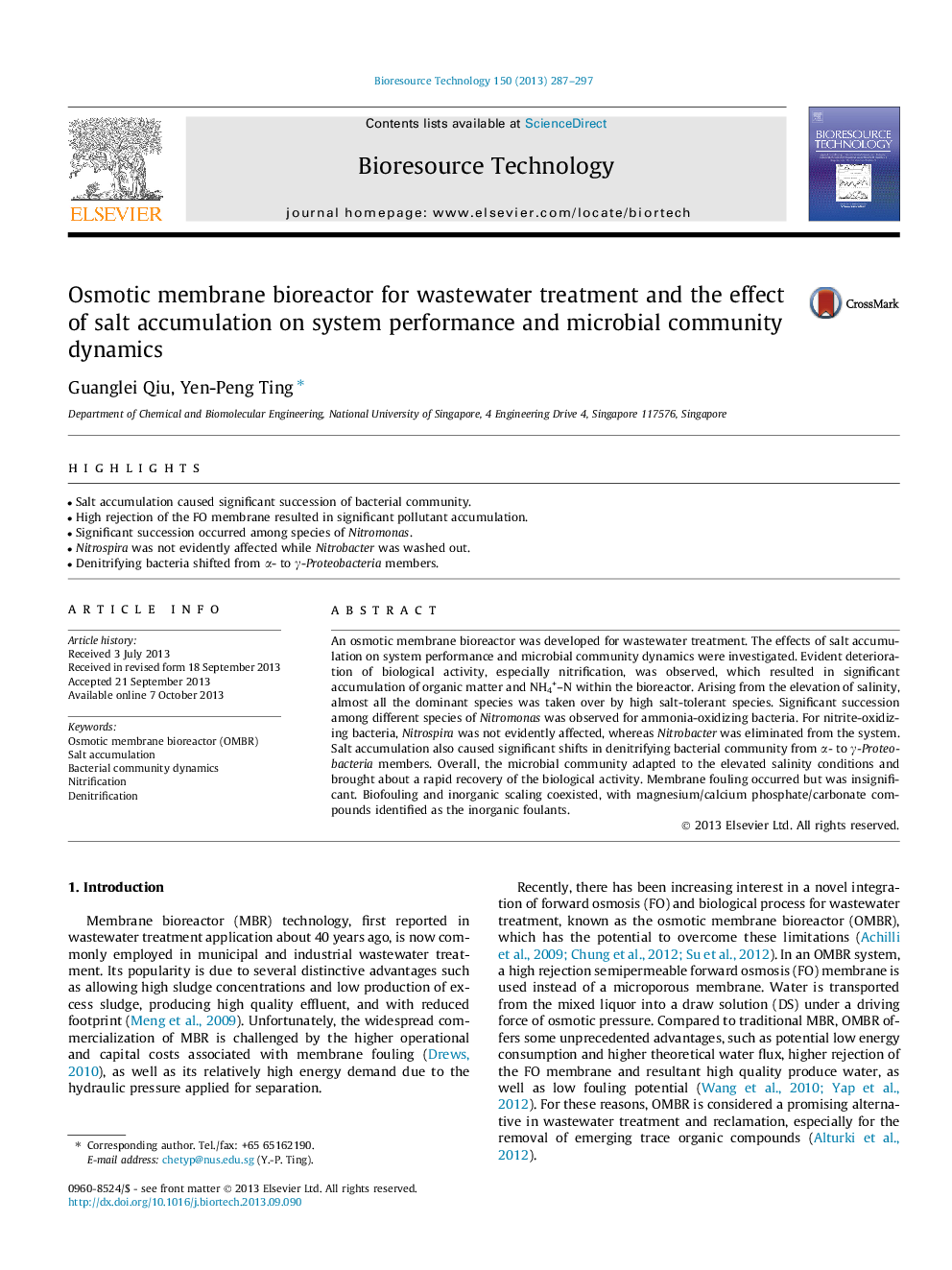| Article ID | Journal | Published Year | Pages | File Type |
|---|---|---|---|---|
| 7079190 | Bioresource Technology | 2013 | 11 Pages |
Abstract
An osmotic membrane bioreactor was developed for wastewater treatment. The effects of salt accumulation on system performance and microbial community dynamics were investigated. Evident deterioration of biological activity, especially nitrification, was observed, which resulted in significant accumulation of organic matter and NH4+-N within the bioreactor. Arising from the elevation of salinity, almost all the dominant species was taken over by high salt-tolerant species. Significant succession among different species of Nitromonas was observed for ammonia-oxidizing bacteria. For nitrite-oxidizing bacteria, Nitrospira was not evidently affected, whereas Nitrobacter was eliminated from the system. Salt accumulation also caused significant shifts in denitrifying bacterial community from α- to γ-Proteobacteria members. Overall, the microbial community adapted to the elevated salinity conditions and brought about a rapid recovery of the biological activity. Membrane fouling occurred but was insignificant. Biofouling and inorganic scaling coexisted, with magnesium/calcium phosphate/carbonate compounds identified as the inorganic foulants.
Keywords
Related Topics
Physical Sciences and Engineering
Chemical Engineering
Process Chemistry and Technology
Authors
Guanglei Qiu, Yen-Peng Ting,
